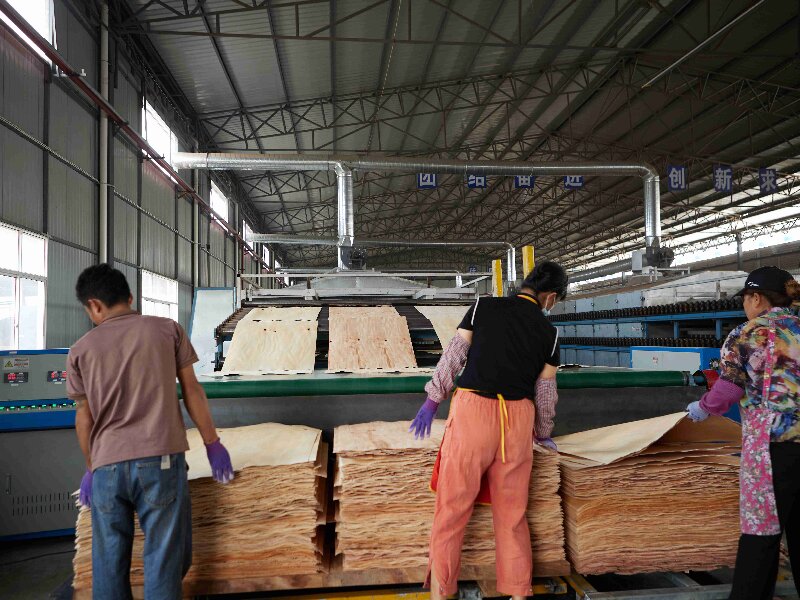Veneer bleaching is a crucial process in woodworking that enhances the aesthetic appeal of wood surfaces by lightening their natural color or removing unwanted stains. This comprehensive guide explores four effective bleaching methods, detailing their chemical compositions, application procedures, and optimal conditions for achieving superior results. Whether you're working with delicate decorative veneers or robust construction-grade wood, understanding these bleaching techniques will significantly improve your finishing outcomes.
This powerful bleaching solution combines:
30-35% hydrogen peroxide solution
28% ammonia solution
in a precise 1:1 ratio by volume
Mixing: Combine equal parts hydrogen peroxide and ammonia in a chemical-resistant container
Timing: Note that the solution remains effective for only 30 minutes after mixing
Application:
Apply liberally to the veneer surface using a synthetic brush or sprayer
Ensure complete, even coverage
Work in well-ventilated areas due to strong ammonia fumes
Allow veneer to dry naturally at room temperature
Complete bleaching occurs during the drying process
Final color develops within 2-4 hours
Pros:
Single-application process
Rapid bleaching action
Effective on most wood species
Cons:
A strong ammonia odor requires proper ventilation
Short working time (30 minutes)
Potential health hazards require PPE
Liquid A:
10g anhydrous calcium carbonate
60g warm water (50°C)
Stir until completely dissolved
Liquid B:
80ml 35% hydrogen peroxide solution
20ml distilled water
Mix thoroughly
First Coating:
Apply Liquid A evenly across the veneer surface
Allow 5 minutes of penetration time
Wipe off excess with a clean, absorbent cloth
Second Coating:
Apply Liquid B immediately after wiping
Use a separate brush to prevent contamination
Ensure complete coverage
Standard drying: 3 hours at room temperature
Enhanced bleaching: 18-24 hours drying
Final wipe-down with a damp cloth removes residual yellowing
Never premix Liquids A and B
Use separate application tools for each solution
Store solutions in clearly labeled, airtight containers
Primary Solution:
3g sodium imine
100g distilled water
Stir until fully dissolved
Activator Solution:
0.5g glacial acetic acid
100g distilled water
Mix immediately before use
Combine solutions immediately before application
Apply the mixture evenly to the veneer surface
Process at elevated temperature:
60-70°C drying temperature
5-10 minute exposure time
Check color development every 2 minutes
Rinse with clean water to stop the bleaching action
Neutralize the surface with a mild alkaline solution if needed
Particularly effective on dense hardwoods
Excellent for veneers requiring precise color control
Minimal wood fiber damage compared to stronger bleaches
5g sodium hypochlorite
95g distilled water
Optional additives:
0.5-1g benzoic acid (for enhanced penetration)
0.3ml sulfuric acid (for accelerated action)
Option 1: Heat the solution to 50-60°C before application
Option 2: Apply at room temperature, then heat the veneer to 70°C
Prepare a standard sodium hypochlorite solution
Add 0.5g benzoic acid per 100ml solution
Apply to veneer while maintaining a 60°C surface temperature
Process for 8-12 minutes, depending on desired lightness
Use corrosion-resistant application tools
Maintain proper ventilation
Wear acid-resistant gloves and eye protection
For most professional applications, Method 2 (two-stage) provides the best balance of control and effectiveness. When working with challenging species like eucalyptus or teak, Method 4's heat-assisted approach yields superior results. Always conduct small-scale tests before full production runs to verify color outcomes and processing parameters.
By mastering these veneer bleaching techniques, woodworkers can significantly expand their finishing capabilities, creating products with enhanced visual appeal and greater market value. Proper application of these methods, combined with strict safety protocols, will ensure consistent, high-quality results while protecting both craftspeople and the environment.

Copyright By © Shandong Shine Machinery Co.,Ltd